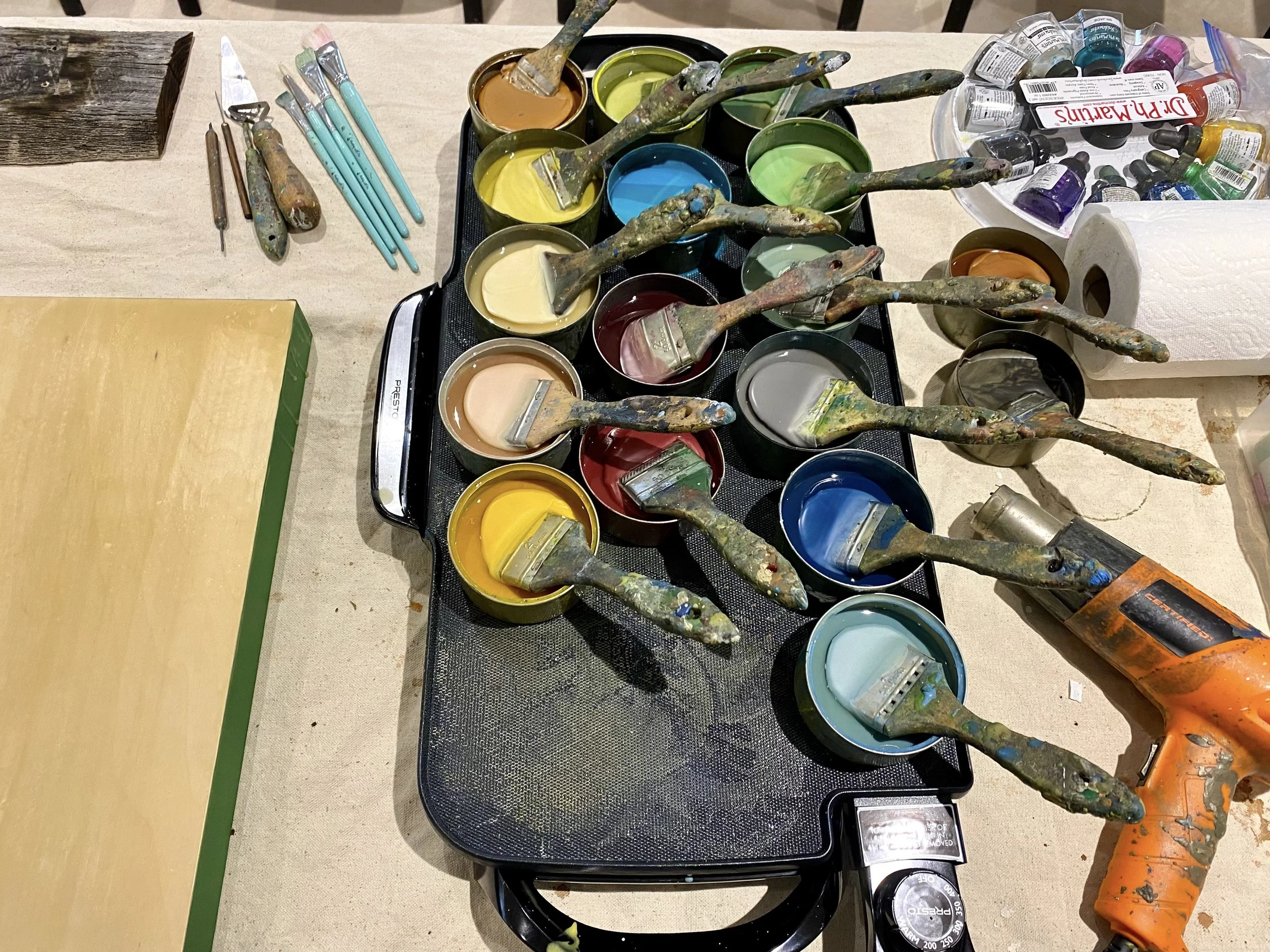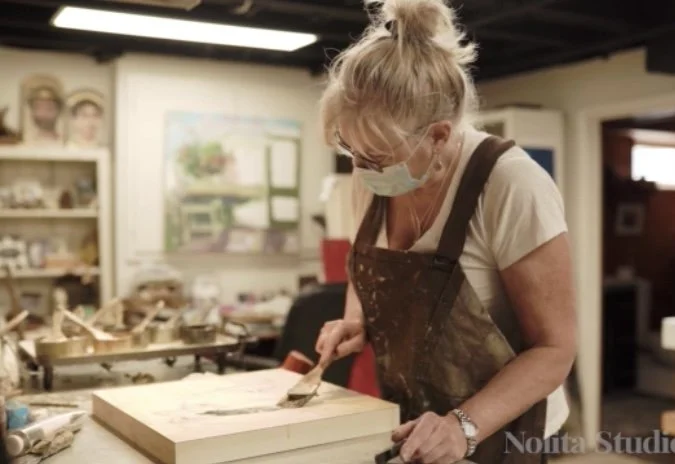About encaustic
Encaustic is an ancient medium treasured for its luminosity, layering capabilities and sense of mystery. It is the oldest painting medium still in use today, dating back to ancient Greece (1000 B.C.)! In the late 1800’s, thousands of encaustic paintings called the “Fayum Portraits” were unearthed from burial chambers in Egypt and were found to be in pristine condition, a testament to the longevity of encaustic work.
Encaustic is a beeswax-based paint comprised of beeswax, damar resin (to add hardness and shine) and pigment (such as oil paint or powdered pigments). It is kept molten on a heated palette, brushed or poured onto rigid panels and reheated to create a durable, archival surface. To ensure a permanent bond, one layer is fused to the previous layer using a heat source such as a heat gun or blow torch. The resulting durable enamel-like surface dries quickly and is impervious to moisture, mildew, dust, shrinkage, darkening, fading, yellowing and cracking (unless the artwork is exposed to freezing temperatures or the support is not rigid enough).
Encaustic paints are a very durable form of painting when properly cared for. If a painting is placed in a warm room in your home it will NOT melt… the smell of beeswax will simply be elevated and, as with all artwork, avoid hanging your encaustic painting in direct sunlight or leaving it in a vehicle for any prolonged period of time in extreme hot or cold weather. (The melting temperature of wax is actually 165 degrees Fahrenheit so if your painting is melting in your home, you have bigger problems!).
While an encaustic painting is curing in its first year or if exposed to the cold, it may develop a white cloudy film called “bloom.” This is a natural process and can be eliminated and the original luster restored by simply buffing the surface with a soft cotton or microfiber cloth in a random circular motion. As time goes by and the wax cures and hardens, buffing may not be necessary as it will keep its polished look. If you must transport your painting in hot or cold weather, cover the entire wax surface with wax paper, then cardboard, and some form of insulation. When the painting is at room temperature, unwrap the painting, remove the wax paper and buff if necessary. Encaustic paintings do not need to be varnished or protected by glass; an occasional dusting or light polishing will continue to preserve its soft, satiny sheen.
In short, care for your encaustic art just as you would any piece of fine art and it will last for centuries.

